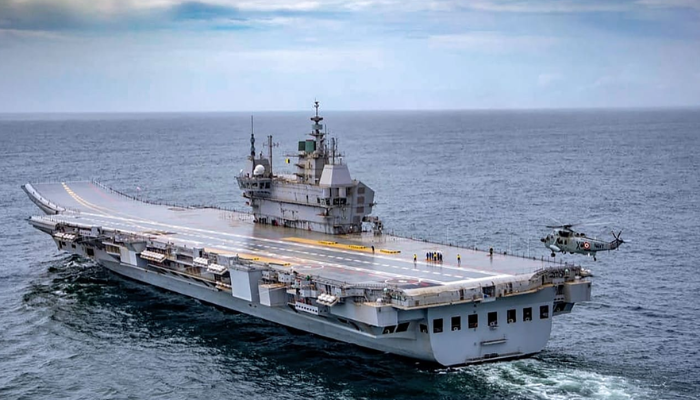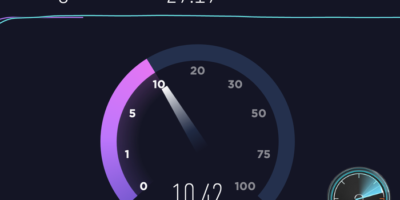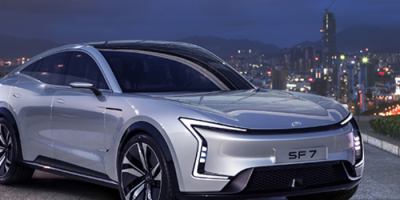The Indian Navy’s INS Vikrant is the largest warship ever built in the country’s history. Launched in 2013, INS Vikrant was the first aircraft carrier to be built in India. The ship is the first of the three Vikrant-class aircraft carriers India plans to build. It is designed to carry up to 30 aircraft, including fixed-wing and rotary-wing aircraft. It is powered by four gas turbines and two diesel engines and can reach up to 30 knots. The ship has advanced weaponry, sensors, and various defensive systems.
Indian Naval History
The Indian Naval History is a proud and significant part of the nation’s history. The Indian Navy has been an important part of India’s defense since the early days of the British Raj. One of the most significant naval vessels to be built in India was the INS Vikrant, the largest warship ever built in India. It was a 45,000-ton aircraft carrier that was commissioned in 1961.
The INS Vikrant was the first Indian-built aircraft carrier and the first aircraft carrier of the Indian Navy. It was built with the British and was a major step for Indian naval power. The Vikrant was mainly used for training purposes. It was also used for various operations, including the 1971 Indo-Pak War and Operation Trident.
The INS Vikrant was eventually decommissioned in 1997 and is currently preserved as a museum ship in Mumbai. The INS Vikrant symbolizes Indian naval power, and its significance in the Indian Navy’s history cannot be overstated.
INS Vikrant – Background and Specifications
INS Vikrant is India’s first indigenous aircraft carrier and the largest warship built in Indian Naval history. It is a Vikrant-class aircraft carrier named after the aircraft carrier INS Vikrant that served in the Indian Navy from 1961 to 1997. It is the first aircraft carrier to be constructed entirely in India and was built by the Cochin Shipyard in Kochi.
It has a displacement of 40,000 tonnes and a length of 260 meters, making it the largest warship to be built in India. Four General Electric LM2500 turbines power the ship and can reach a maximum speed of 28 knots. The ship is also equipped with an integrated advanced action data system capable of controlling all the ship’s systems, including weapon control, navigation, and communications.
It also has an aircraft complement of 36 aircraft and can carry 16 aircraft in the hangar. The ship is also equipped with 5 in (127 mm) guns, 4 AK 630 close-in weapon systems, 2 Sea King helicopters, and 2 Super Sea King helicopters. The ship is also capable of carrying a variety of missiles, torpedoes, and anti-submarine weapons. It is expected to be commissioned in 2021, an
Role of INS Vikrant in the Indian Navy
The Indian Navy’s INS Vikrant is the largest warship ever built in India’s naval history and has played a crucial role in the country’s maritime security. The INS Vikrant is an aircraft carrier capable of carrying up to thirty aircraft. It was commissioned in 1961 and has since seen action during the Indo-Pakistani War of 1971, Operation Parakram in 2002, and numerous other naval operations.
The primary role of the INS Vikrant is primarily that of an aircraft carrier, but it has also been used as a command and control platform for Indian naval operations. The ship has various capabilities and can launch and recover fixed- and rotary-wing aircraft. Its primary role is to provide air support to the Indian Navy and to conduct offensive operations against enemy ships and aircraft. The ship also has an extensive air defense system capable of deploying surface-to-air missiles to engage hostile aircraft.
The INS Vikrant has also been used as a platform for amphibious operations. It has been used to deploy troops for various operations, including humanitarian relief, counter-terrorism, and rescue operations. The ship has also been used to deploy aircraft and helicopters for anti-piracy operations and search and rescue missions.
The INS Vikrant has also been used in various other roles, including that of a training platform. The ship has been used to train naval personnel on various subjects, such as naval tactics, aircraft handling, and aircraft maintenance. The ship has also been used to research and develop new military technologies and systems.
The INS Vikrant is a vital asset to the Indian Navy and has played a major role in maritime security. It has been involved in numerous operations and has been instrumental in maintaining India’s maritime presence in the Indian Ocean and the Arabian Sea.
Development of INS Vikrant and its Significance
The development of INS Vikrant, the largest warship ever built in Indian Naval history, has been a milestone in the country’s defense sector. Built-in collaboration with Cochin Shipyard and Mazagon Dock Limited, the aircraft carrier was launched in August 2013. The warship was a part of the Indian Navy’s Carrier Battle Group and was designed to be the largest and most powerful warship in the region. The warship was equipped with various weapons and systems and could launch multiple aircraft simultaneously, making it a powerful asset for the Indian Navy.
What makes INS Vikrant even more significant is its symbolic power. The ship’s name is derived from the Indian independence movement, as it was inspired by the first Indian aircraft carrier, INS Vikrant. The ship’s name refers to the struggles and sacrifices of the Indian people in their fight for independence. In addition, the warship launch was a major milestone in India’s defense sector, as it marked the completion of the first indigenous aircraft carrier. This demonstrates India’s commitment to developing indigenous military technologies and capabilities and its ability to produce technologically advanced warships.
Overall, the development of INS Vikrant is an important milestone in Indian Naval history. It is the largest warship ever built in India and a symbol of its commitment to developing its military technologies and capabilities. The warship’s launch also serves as a reminder of the struggles and sacrifices of the Indian people in their fight for freedom.
Challenges Faced by INS Vikrant
The INS Vikrant is the largest warship ever built in Indian Naval history. It is an aircraft carrier that was designed and built by the Indian Navy and was launched in 2020. The carrier can carry up to 36 aircraft with state-of-the-art weapons and sensors. Despite being a major milestone in the Indian Navy’s capabilities, the Vikrant has faced some challenges since its launch.
One of the main issues has been the carrier’s weight. At a whopping 37,500 tonnes, the Vikrant is much heavier than other warships of similar size. This has resulted in difficulties maneuvering the ship and its speed and range. Another challenge has been the range of the aircraft it can carry. Although the Vikrant can carry up to 36 aircraft, its limited range makes it difficult to operate in certain areas.
The Vikrant’s design has also been an issue, as its superstructure is much taller than usual for a ship of its size. This has caused some problems with stability, as the ship is more prone to rolling in rough seas. Additionally, Vikrant’s propulsion system has been a problem, as it has been difficult to maintain a consistent speed while maneuvering the ship.
Finally, the cost of maintaining and operating the Vikrant has been a major challenge. Although the carrier is equipped with the latest weapons and sensors, the cost of keeping it running has been a major issue. The Indian Navy has had to invest a lot of money to keep the Vikrant operational, which has strained its budget.
Further Prospects for the INS Vikrant
INS Vikrant is the largest warship ever built in Indian naval history and symbolizes India’s growing military might. The ship has been designed to accommodate the latest naval technology, including modern radar and fire-control systems, and can launch air strikes. The ship will be a major asset to the Indian Navy, giving it a strategic regional advantage. With an expected operational life of over 30 years, the INS Vikrant is expected to remain a pivotal component of the Indian Navy’s fleet for many years to come.
The INS Vikrant has various weapons and sensors, including surface-to-air and surface-to-surface missiles, anti-submarine torpedoes, and various communications systems. The ship has multiple helicopters and patrol aircraft, allowing for increased surveillance and reconnaissance capabilities. The ship can also provide medical and disaster relief services and is equipped with a hospital and medical facilities.
The INS Vikrant symbolizes the Indian Navy’s commitment to modernizing its fleet and staying ahead of the curve. The ship is an example of how the Indian Navy can use cutting-edge technology to its advantage and is a testament to the Indian Navy’s desire to remain a major maritime power in the world. The ship will be an important part of India’s naval strategy, and its presence will serve as a reminder of the Indian Navy’s strength and capability.
The INS Vikrant is expected to have a long and successful career in the Indian Navy and will remain a key component of India’s naval operations. The ship’s advanced capabilities and ability to provide medical and disaster relief will make it a valuable asset to the Indian Navy. With its modern capabilities and potential to serve as a platform for India’s future naval operations, the INS Vikrant is expected to contribute to India’s naval strategy for years significantly.
Conclusion
INS Vikrant is an iconic warship in Indian naval history. It has earned its place in the annals of Indian naval history for its impressive size, technological innovations, and outstanding performance in several missions. It symbolizes the Indian Navy’s commitment to protecting its citizens on land and at sea. The Indian government is proud to have such a powerful warship and continues to invest in its upkeep and modernization. The future of INS Vikrant is bright, and its legacy will continue to inspire generations to come.





















Comments